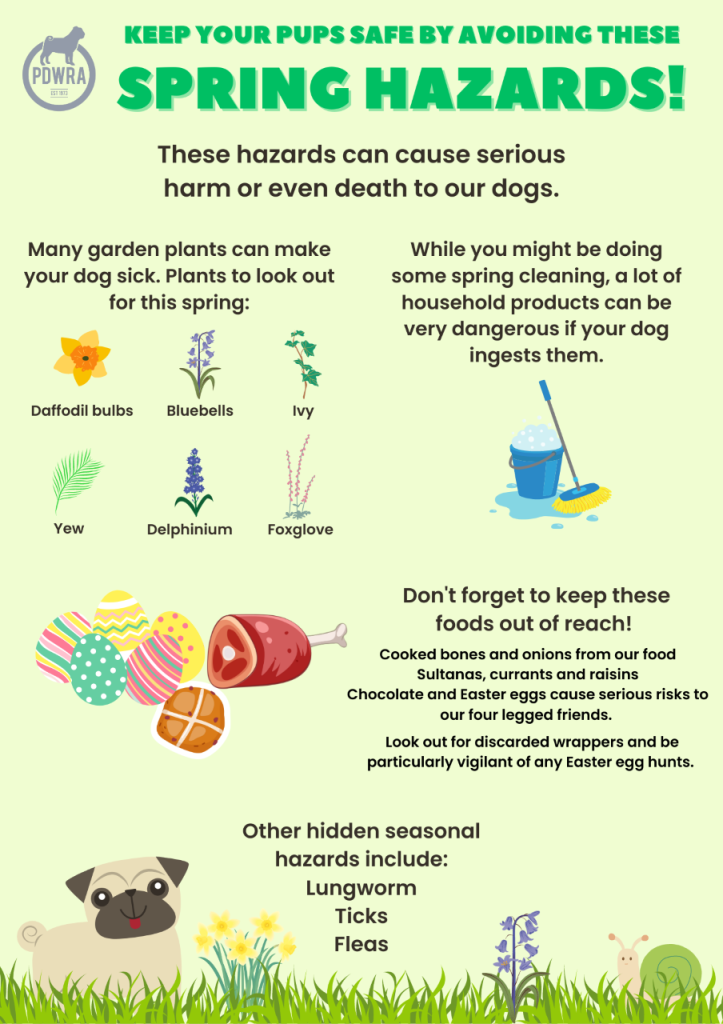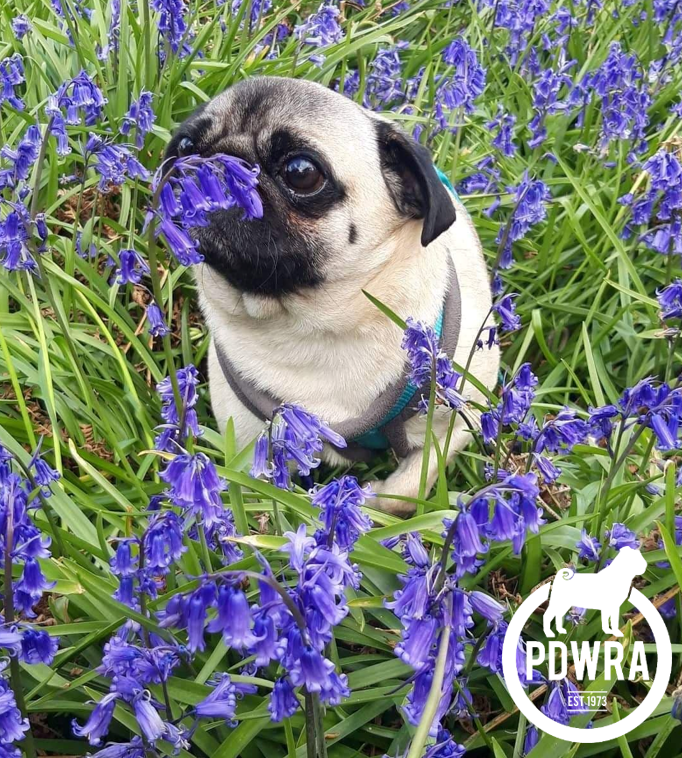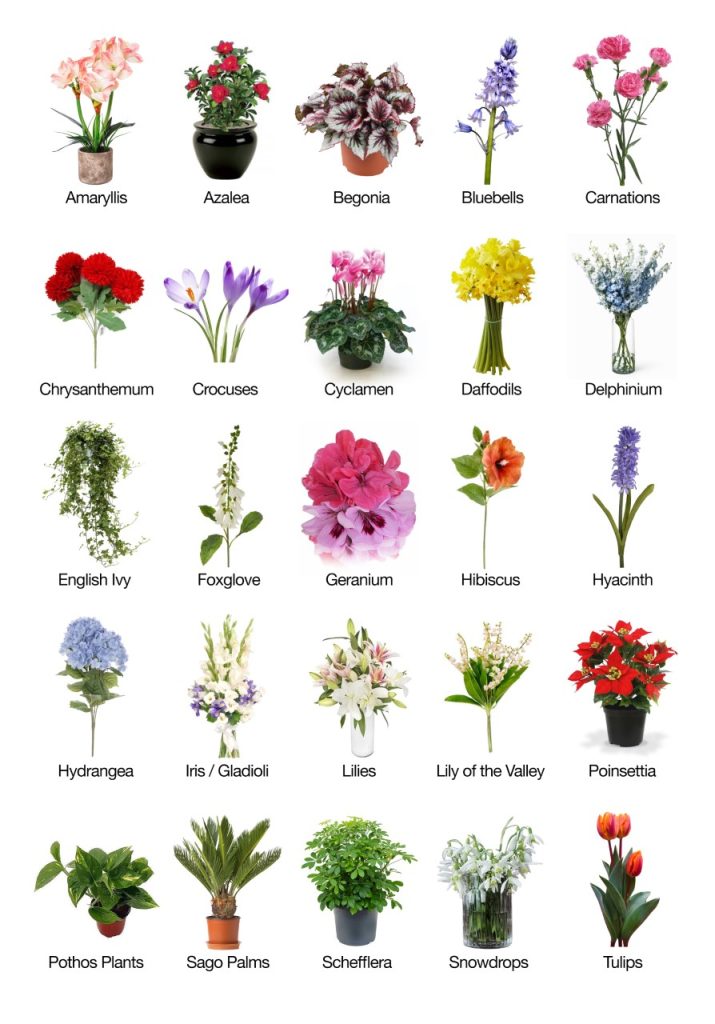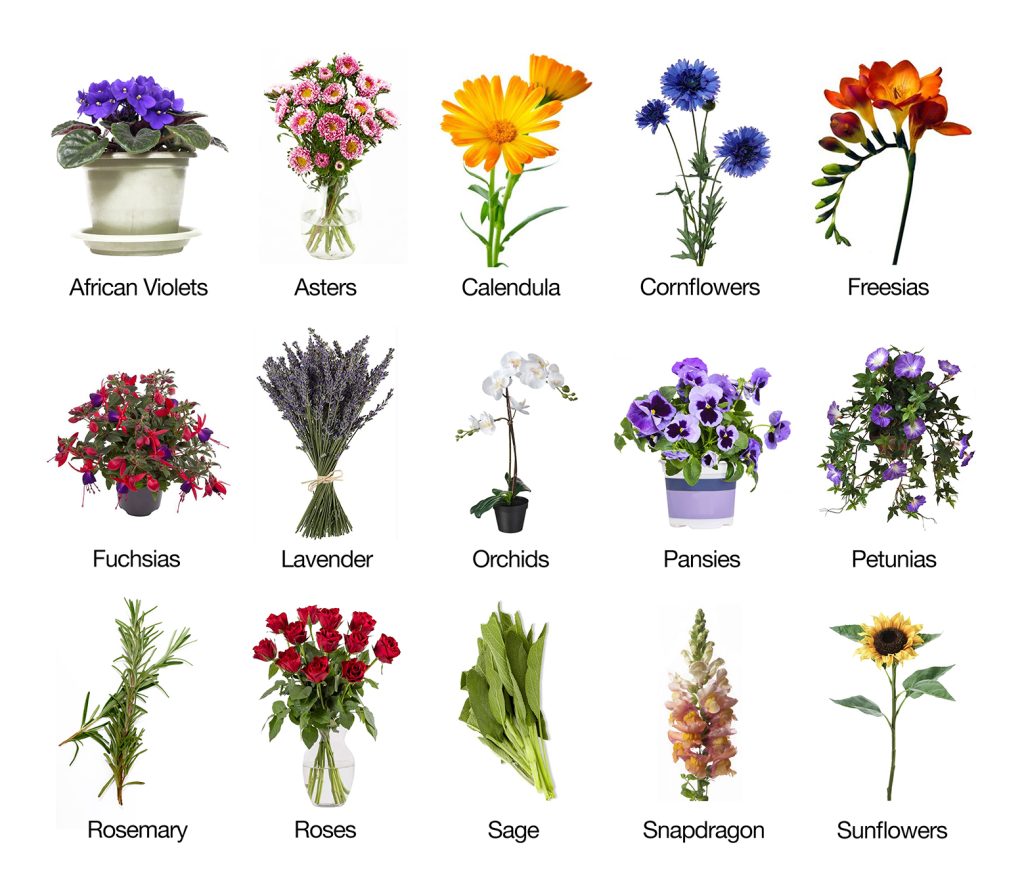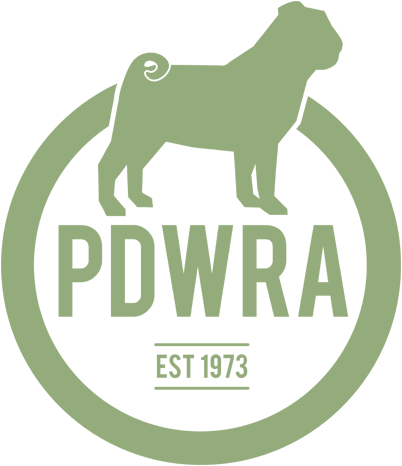It’s officially Spring and Easter is upon us already, so it’s worth remembering the potentially dangerous hazards that are around to our furry friends.
Temptation will be indoors and out, so please be vigilant, and know what to avoid, reminding visitors or children who may not be as aware as we are, so to enjoy this time of year, safely:
Most of us know about keeping Easter chocolate away from temptation but our dogs will endeavour to seek things out with their highly sensitive sense of smell.
Theobromine found in chocolate is a stimulant. It may cause excitability or muscle twitching, tremors, even fitting, or they may have an increased heart rate. They may initially be sick, but don’t try to make them sick. If vomit is frothy and foamy it could get into their lungs, making matters worse.
Other signs might include drinking a lot, drooling, not walking in a straight line and fast breathing. If enough is eaten then the effects can be severe or even fatal.
Some sugar-free chocolates contain xylitol, which is an artificial sweetener especially poisonous to dogs. It can cause a dog’s blood sugar level to drop to dangerous levels, also possibly liver failure.
If you suspect your pet may have eaten chocolate, keep the packaging and call your vet immediately. Help them regarding the type of chocolate that’s been eaten (dark, plain, milk, white etc.) and how much has been consumed.
To learn more about chocolate toxicity and the signs and symptoms: https://www.pdsa.org.uk/pet-help-and-advice/pet-health-hub/conditions/chocolate-poisoning?
For more on Easter dangers: https://www.thekennelclub.org.uk/easterdangers?
FURTHER FOOD HAZARDS include:
– All chocolate, lying around, discarded or forgotten out on Easter hunts!
– Fruit or Simnel cake, hot-cross buns, anything with sultana’s and raisins (grapes)
– Traditional roasts where bones can easily splinter
– Stuffing, gravy, anything which may contain onion, chives, garlic.
– Other foods, such as certain nuts, blue cheese, fatty and salty foods
Although chocolate foil wrappers are not poisonous, they can cause an obstruction if eaten. This can be dangerous enough to require surgery. Signs of an obstruction may include being sick, being tired, they may be off their food, or finding it difficult to go to the toilet!
If you are spring cleaning, make sure that products are inaccessible to your dog and that they are kept away from areas while being cleaned, or have recently been cleaned.
There’s a whole array of OTHER hazards, especially outdoors, including: poisonous plants & bulbs, weed killer, pesticides including slug pellets, compost bins, even grass cuttings!
Many different plants commonly found in the home, gardens and outdoor areas can make your dog ill. Some of these are highly poisonous, while others may only cause a mild tummy upset. Incidents of poisoning from spring bulbs are most likely to occur from dogs eating the bulbs in spring when they begin to flower and autumn when they are planted.
For more information, please see:
Poisons | Dog health | The Kennel Club
Including a comprehensive list of poisonous plants:
Poisons in your garden | Dog health | Kennel Club (thekennelclub.org.uk)
On a sunnier note, here are some, from many, that are regarded to be safe for our dogs:
However, if you suspect your dog might have ingested anything that is appearing to make them ill, contact your vet immediately.

